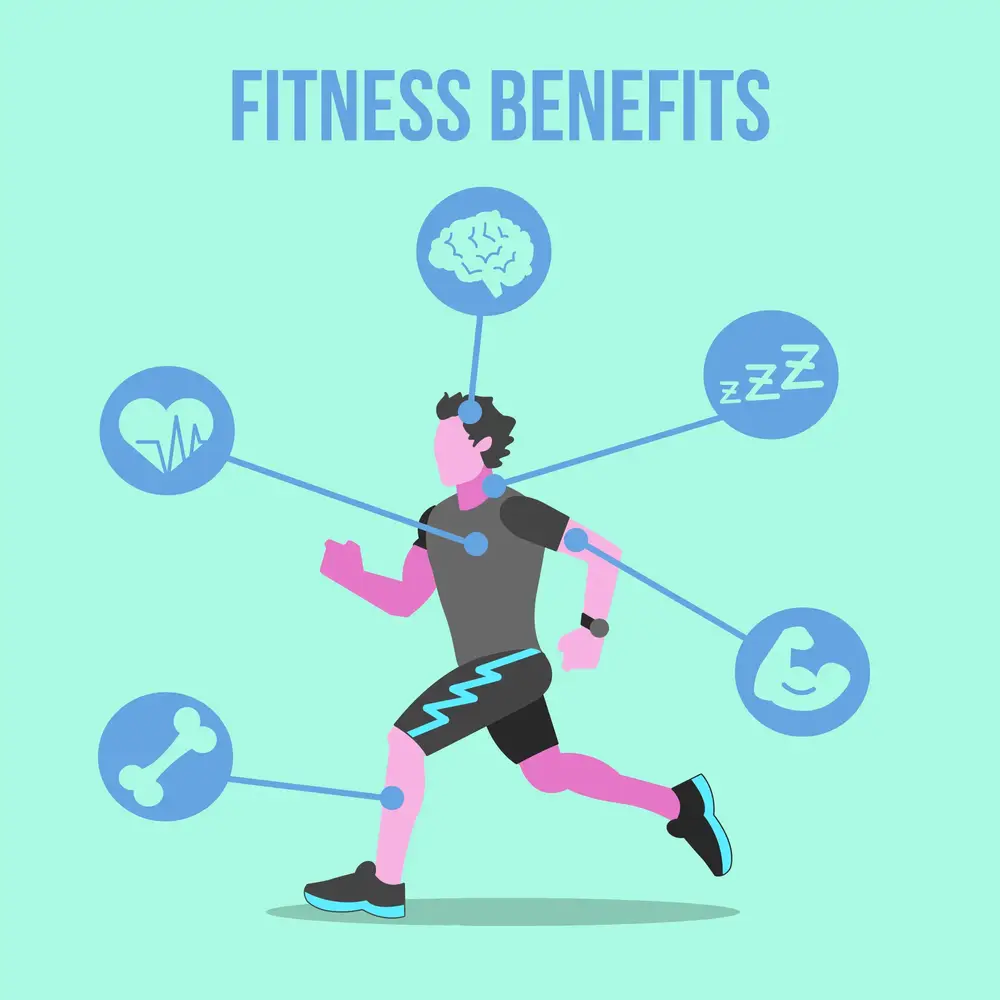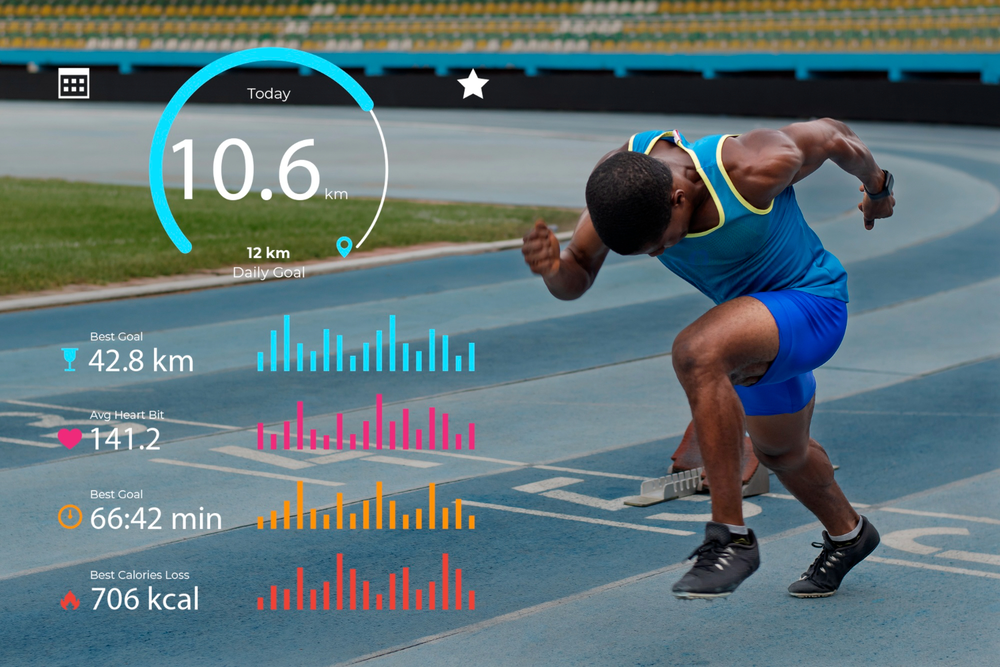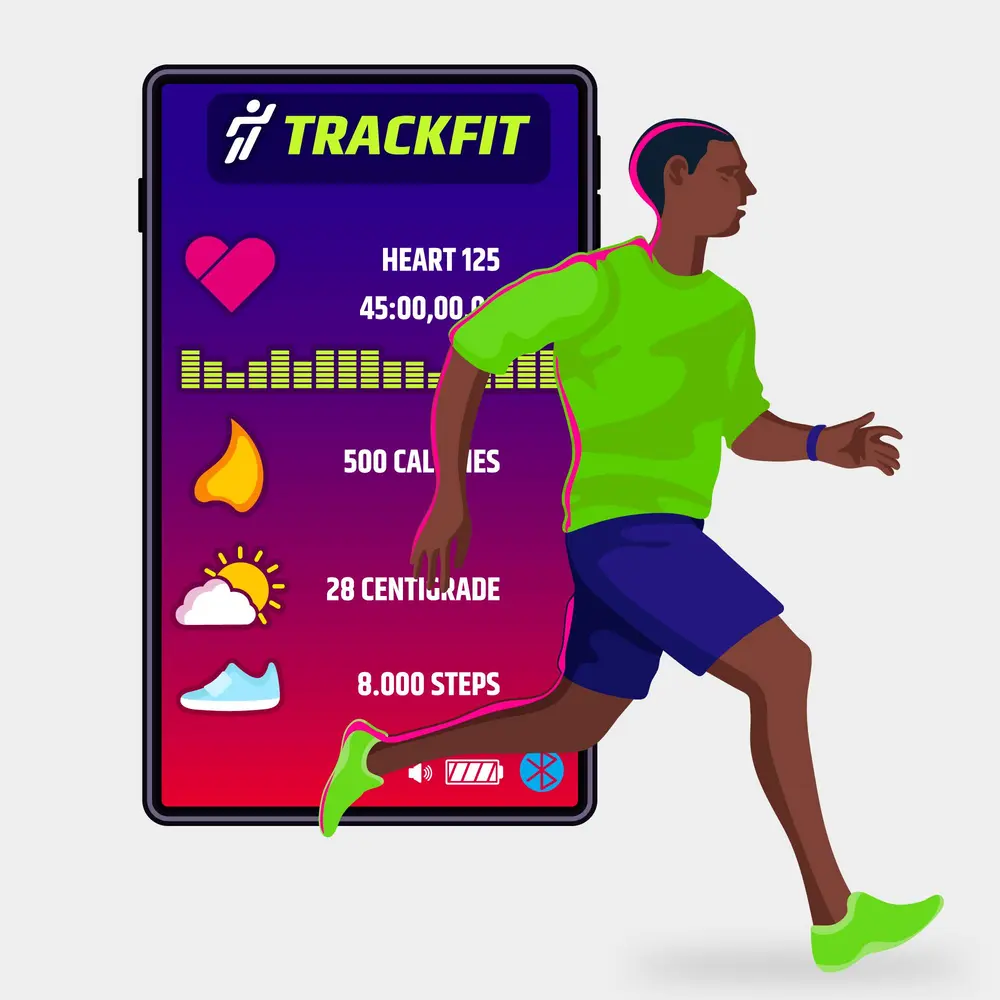Embarking on a fitness journey is an exciting endeavor, but it is crucial for setting realistic fitness goals to ensure success. Establishing these targets not only provides a clear path to follow but also fuels motivation, making the journey more enjoyable and productive. The significance of goal-setting in fitness cannot be overstated. It is akin to having a roadmap for a trip. Without it, one might wander aimlessly, making it harder to reach the desired destination.
In addition to setting goals, tracking progress plays an equally important role in a fitness journey. It is like a compass that helps you stay on course. By regularly monitoring your progress, you can identify what is working and what’s not, allowing you to adjust your strategies accordingly. This continuous feedback loop can lead to more effective workouts, faster results, and a heightened sense of accomplishment. It is not just about reaching the end goal, but also about appreciating the incremental improvements along the way.
This article aims to delve deeper into these two fundamental aspects of fitness, setting realistic goals and tracking progress. It will provide insights into why these elements are essential, how to effectively implement them, and how they can transform your fitness journey. By understanding and applying these principles, you can enhance your fitness experience, making it more rewarding and sustainable in the long run.
The Importance Of Fitness Goals

Goal setting serves as a powerful tool in fitness, acting as the guiding light that illuminates the path to success. It provides structure and direction, turning vague aspirations into concrete plans. When you set fitness goals, you are essentially defining what you want to achieve, whether it is losing weight, building muscle, or improving endurance. This clarity helps you focus your efforts and resources, making your fitness journey more efficient and purposeful.
Setting fitness goals also offers substantial psychological benefits. It fosters motivation, boosts self-confidence, and cultivates a sense of purpose. When you set and pursue a goal, you are not just working towards a physical transformation, but also a mental one. Each small victory, each milestone reached, reinforces your belief in your abilities and fuels your determination to push forward. This positive feedback loop can significantly enhance your mental well-being, making the fitness journey as much about mental strength as physical prowess.
To maximize these benefits, it is recommended to set SMART goals in fitness. SMART stands for Specific, Measurable, Achievable, Relevant, and Time-bound. This approach ensures your goals are clear, trackable, realistic, aligned with your broader fitness aspirations, and have a defined timeline. By adopting the SMART framework, you can set yourself up for success, making your fitness journey more structured, manageable, and rewarding.
Steps To Set Realistic Fitness Goals

The first step in setting realistic fitness goals is understanding your current fitness level. This involves assessing your physical capabilities, endurance, strength, and flexibility. You might consider getting a fitness assessment or consulting with a fitness professional. Knowing where you stand helps you set goals that are challenging yet achievable, preventing discouragement or potential injuries from overly ambitious targets.
Next, apply the SMART framework to your fitness goals. Make them Specific by clearly defining what you want to achieve. Ensure they are Measurable by attaching quantifiable metrics, like losing a certain amount of weight or lifting a specific weight. Goals should be Achievable, pushing you but still within your capabilities. They should be Relevant to your overall fitness aspirations and lifestyle. Lastly, they should be Time-bound, with a clear deadline to motivate consistent effort.
It is also important to set both short term and long term goals. Short term goals provide immediate motivation and a sense of accomplishment, while long term goals keep you focused on the bigger picture. For instance, a short term goal might be to exercise three times a week, while a long-term goal could be to run a marathon in a year.
Your goals should be personalized to fit your lifestyle, capabilities, and health conditions. If you have a busy schedule, setting a goal to spend two hours in the gym every day might not be realistic. Similarly, if you have certain health conditions, some forms of exercise might not be suitable. Adjust your goals to align with your personal circumstances to ensure they are realistic and sustainable.
The Role Of Fitness Plans In Achieving Goals

A well structured fitness plan is instrumental in reaching your fitness goals. It serves as a roadmap, outlining the steps you need to take to reach your destination. Such a plan provides structure to your fitness journey, ensuring you are not just randomly working out but following a strategic approach designed to achieve specific outcomes. It also fosters consistency, which is key to making progress and maintaining motivation.
Creating a personalized fitness plan involves several steps. First, consider your fitness goals and current fitness level. Your plan should be tailored to help you achieve your goals while taking into account your capabilities. Next, decide on the types of exercises that will help you reach your goals. For instance, if your goal is to build strength, your plan might include weightlifting exercises. Then, determine the frequency and duration of your workouts, ensuring they fit into your schedule. Finally, include rest days in your plan to allow your body to recover and prevent burnout.
Professional guidance can play a significant role in creating a fitness plan. Fitness professionals, such as personal trainers or physiotherapists, have the knowledge and experience to design effective, safe, and personalized fitness plans. They can provide advice on the types of exercises that are best for your goals, how to perform them correctly to avoid injury, and how to adjust your plan as you progress. While it is possible to create a fitness plan on your own, professional guidance can be invaluable, especially for beginners or those with specific health conditions.
Tracking Fitness Progress

Tracking fitness progress is a multifaceted process that can be approached in various ways. The method you choose largely depends on your personal preferences and the nature of your fitness goals. Some common methods include using fitness tracking devices and apps, observing physical changes, monitoring strength and energy levels, and keeping a fitness journal.
Fitness tracking devices and apps have become increasingly popular due to their convenience and versatility. They can monitor a range of metrics, from steps taken and calories burned to heart rate and sleep patterns. These tools can provide valuable insights into your fitness journey, helping you adjust your strategies as needed. However, they do have limitations. For instance, they may not always be 100% accurate, and they might not capture all aspects of fitness, such as muscle strength or flexibility.
Aside from digital tools, there are other ways to track your progress. Paying attention to physical changes, such as weight loss, muscle gain, or improved posture, can be very rewarding. Monitoring your strength levels, such as how much weight you can lift or how long you can hold a plank, can also indicate progress. Additionally, noticing improvements in your energy levels, mood, and overall well-being can signify that your fitness routine is working.
Keeping a fitness journal is another effective way to track progress. It allows you to record your workouts, note any changes or improvements, and reflect on your experiences. This can provide a comprehensive view of your fitness journey, helping you understand patterns, celebrate successes, and identify areas for improvement. A fitness journal can also serve as a source of motivation, reminding you of how far you’ve come and encouraging you to keep going.
Navigating Plateaus And Setbacks
Fitness plateaus are periods where progress seems to stall despite consistent efforts. They occur due to various reasons, such as the body adapting to a routine, overtraining, or not providing the body with enough nutrients to recover and grow. Understanding that plateaus are a normal part of the fitness journey is crucial to maintaining motivation and focus.
Overcoming setbacks and staying motivated requires a combination of patience, resilience, and strategic adjustments. If you hit a plateau, consider changing up your workout routine to challenge your body in new ways. This could involve varying the types of exercises you do, the intensity, or the duration. Additionally, ensure you are giving your body adequate rest and nutrition to recover and grow. Maintaining a positive mindset is also key. Remember that progress is not always linear, and setbacks are opportunities for learning and growth.
There may come a time when you need to revise your goals and fitness plans. This could be due to changes in your lifestyle, health conditions, or simply because your current plan is not working as expected. It is important to regularly review your goals and plans to ensure they are still relevant and effective. If you are consistently struggling to meet your goals or you are not seeing the progress you expected, it might be time to make some adjustments. This could involve setting new goals, changing your workout routine, or seeking professional advice. Remember, the key to a successful fitness journey is flexibility and adaptability.
Real Life Examples Of Setting And Achieving Fitness Goals

Let’s consider the story of Sarah, a working mother of two who decided to embark on a fitness journey to improve her health and energy levels. Sarah’s initial goal was to be able to run a 5K without stopping. She started by assessing her current fitness level and realized she could only run for a few minutes at a time. Using the SMART framework, she set a goal to increase her running time by five minutes each week until she could run a full 5K.
Sarah faced challenges along the way, including time constraints and initial lack of endurance. However, she remained committed to her goal, waking up early to fit in her runs and gradually increasing her endurance. After several months, Sarah successfully ran her first 5K without stopping. She did not stop there, though. Inspired by her success, she set a new goal to run a half marathon within a year.
From Sarah’s journey, we learn several lessons. First, setting realistic, incremental goals can lead to significant long-term progress. Second, overcoming challenges requires persistence and adaptability. Sarah had to adjust her schedule and gradually build her endurance to meet her goals. Finally, achieving a fitness goal can lead to increased confidence and motivation to set and achieve even bigger goals.
Another example is John, a middle-aged man who wanted to lose weight and improve his cardiovascular health. John set a goal to lose 30 pounds and lower his cholesterol levels within a year. He created a fitness plan that included a balanced diet and regular exercise, including both cardio and strength training. John also used a fitness tracker to monitor his progress and kept a fitness journal to reflect on his experiences.
John faced setbacks, including weight loss plateaus and occasional lapses in his diet. However, he stayed motivated by focusing on his progress rather than perfection. He also sought support from a fitness professional to adjust his plan when needed. After a year, John had not only met his goals but also developed a healthier lifestyle and a love for fitness.
John’s story teaches us the importance of a holistic approach to fitness, including diet, exercise, and mental well-being. It also highlights the value of tracking progress and seeking professional guidance when needed. Most importantly, it shows that fitness is a lifelong journey, not a destination.
Conclusion

In conclusion, setting realistic fitness goals and tracking progress are fundamental aspects of a successful fitness journey. These elements provide direction, foster motivation, and facilitate personal growth. They transform the journey from a vague aspiration into a structured, purposeful endeavor.
Setting goals gives you a clear vision of what you want to achieve. It turns your fitness journey into a roadmap, guiding you towards your desired destination. It is crucial to set SMART goals – Specific, Measurable, Achievable, Relevant, and Time-bound – to ensure they are clear, trackable, and within your capabilities. Remember to set both short-term and long-term goals, as they serve different but equally important purposes.
Tracking progress, on the other hand, is like a compass that helps you stay on course. It provides valuable feedback, allowing you to adjust your strategies as needed. Whether you use fitness tracking devices, observe physical changes, or keep a fitness journal, tracking progress can enhance your fitness experience and lead to more effective workouts and faster results.
Navigating plateaus and setbacks is a normal part of the journey. It is important to remain patient, resilient, and flexible. If you hit a plateau or face a setback, consider it an opportunity for learning and growth. Do not hesitate to revise your goals and plans if needed.
As you embark or continue on your fitness journey, remember that it is a personal journey. What works for others might not work for you, and that is okay. Focus on your own progress, not others’. Celebrate your victories, no matter how small. Seek professional guidance if needed. Most importantly, enjoy the journey. Fitness is not just about the destination, but also about the process. It is about becoming a healthier, stronger, and happier version of yourself.
So, set your goals, track your progress, and embrace the journey. You have the power to transform your fitness experience and, in the process, transform yourself. Good luck on your fitness journey.
Sources:
1. Locke, E. A., & Latham, G. P. (2006). New directions in goal-setting theory. Current Directions in Psychological Science, 15(5), 265-268.
2. Sailer, M., Hense, J. U., Mayr, S. K., & Mandl, H. (2017). How gamification motivates: An experimental study of the effects of specific game design elements on psychological need satisfaction. Computers in Human Behavior, 69, 371-380.
3. Shilts, M. K., Horowitz, M., & Townsend, M. S. (2004). Goal setting as a strategy for dietary and physical activity behavior change: a review of the literature. American Journal of Health Promotion, 19(2), 81-93
4. Thompson, W. R. (2018). Worldwide survey of fitness trends for 2019. ACSM’s Health & Fitness Journal, 22(6), 10-17.
5. Sperandei, S., Vieira, M. C., & Reis, A. C. (2016). Adherence to physical activity in an unsupervised setting: Explanatory variables for high attrition rates among fitness center members. Journal of Science and Medicine in Sport, 19(11), 916-920.
Read more here